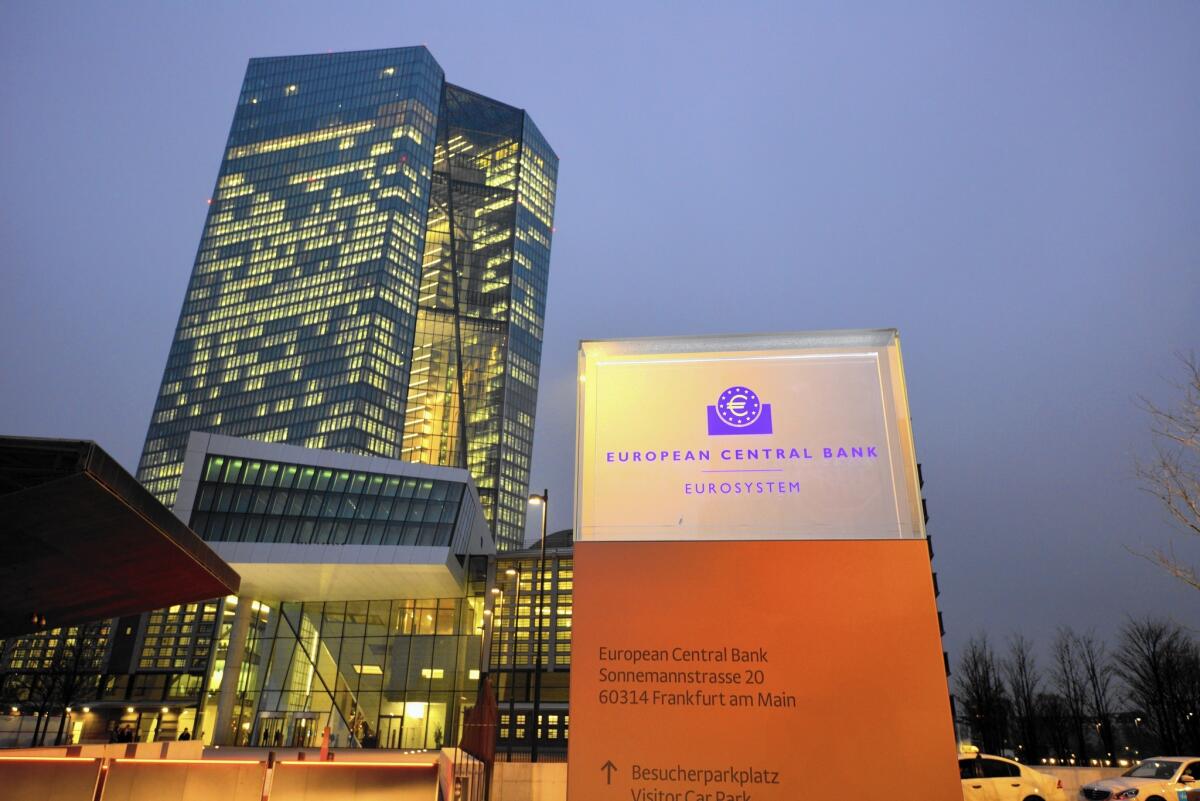Already-strong dollar hits a 9-year high

The dollar is still king at the start of 2015, hitting a nine-year peak as the U.S. economy continues to improve while other nations struggle.
An index measuring the greenback against a basket of currencies, including the euro and the Japanese yen, reached 91.16 on Friday — the highest level since 2006. The dollar soared nearly 13% last year in its best annual finish since 2005.
That’s a good sign for the domestic recovery and for American travelers, whose dollars will go further overseas. But the strong dollar could have the opposite effect on tourism to the U.S and American exports, by effectively raising their prices.
Exports have already slowed at the ports of Los Angeles and Long Beach, a trend expected to continue in 2015.
“Exports have been a significant contributor to U.S. economic growth, but the stronger dollar is a significant headwind for U.S. exports — everything from Napa Valley wines to American automobiles,” said Sung Won Sohn, an economist at Cal State University Channel Islands.
The U.S. economy outperformed European and Asian economies in 2014, expanding at a 5% annual rate in the third quarter, the Commerce Department said late last month. That’s the fastest pace since 2003.
The dollar looks especially appealing now, as central banks abroad are preparing to usher in stimulus policies that may erode their currencies’ value.
“The dollar is being viewed as a better option, or a safer haven, than the currencies of the majority of other large nations,” said Michael James, managing director of equity trading at Wedbush Securities. “The struggles in the European economy are forcing Mario Draghi’s hand.”
Draghi, president of the European Central Bank, told German-language newspaper Handelsblatt on Friday that the bank is “making technical preparations” to adjust its fiscal policies.
Investors interpreted the comments as a sign that quantitative easing — an effort by a central bank to perk up the economy usually by purchasing government bonds — is inevitable for Europe. The euro on Friday hit a 4 1/2-year low against the dollar.
“It now seems more of a question as to when Quantitative Easing (QE) will occur rather than if,” wrote Howard Archer, chief European and U.K. economist for IHS Global Insight, in a New Year’s Eve research note.
Such a move probably would result in lower interest rates in the Eurozone, analysts said. At the same time, investors expect the U.S. Federal Reserve to boost interest rates sometime this year — for the first time since 2008.
Higher rates tend to attract higher currency investment, said Edward Jones investment strategist Kate Warne.
The Fed is closely watching the labor market, which added a robust 321,000 jobs in November in the largest hiring upswing in nearly three years. And as more people funneled into the job market, the national unemployment rate stayed stable at 5.8%.
“We’re seeing a lot of money move away from Europe into the U.S.,” Warne said. “Investors would rather have a higher rate in a stronger economy than a lower rate in a weaker economy.”
The ports of Los Angeles and Long Beach said weaker economies overseas and a powerful U.S. dollar hurt exports in recent months. Exports from the ports fell 15% in November, compared with a year earlier.
Though overall volume at the ports was up during the first 11 months of 2014, exports dropped 1.6%.
“It prices us out of a lot of markets,” international trade economist Jock O’Connell said of the surging dollar. “It’s great for tourists, for Americans buying foreign products, but foreigners buying our products have in the last several months seen a substantial mark-up in prices.”
And the consequences will extend to both goods and services, he said.
“Hiring an L.A. architect to build a building in Singapore — that’s going to go up for the Singaporeans, so they might go to London,” he said.
Nationwide exports of goods and services rose 3.1% to $1.95 trillion through October compared with the same period a year earlier, according to the Commerce Department. Chad Moutray, chief economist for the National Assn. of Manufacturers, thought until a few months ago that exports also would increase this year.
He now expects exports in 2015 to be flat because of the surging dollar.
Foreign tourism to the U.S. could take a hit too. Members of the Asian American Hotel Owners Assn. have “some concerns” about the decline in international travelers, said the group’s interim president, Chip Rogers.
Foreigners tend to visit for extended periods and spend heavily, he said, so an unfavorable exchange rate could keep some of them home. Hotels and other hospitality businesses, however, could offset any losses with an expected increase in domestic U.S. travel, driven by an improving economy and lower gas prices.
“The overall outlook is very good,” Rogers said.








